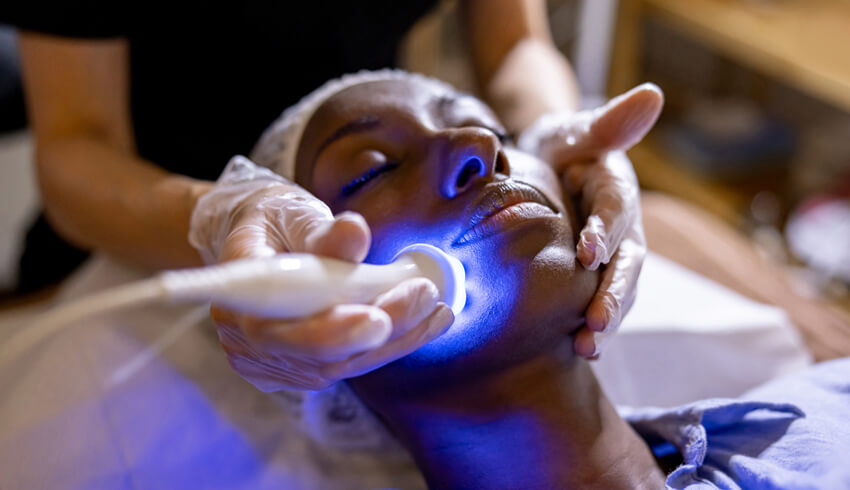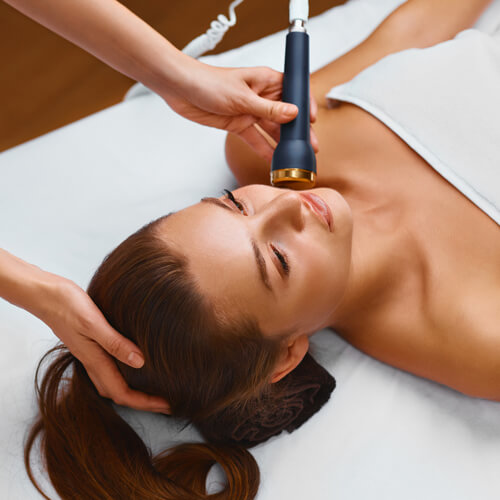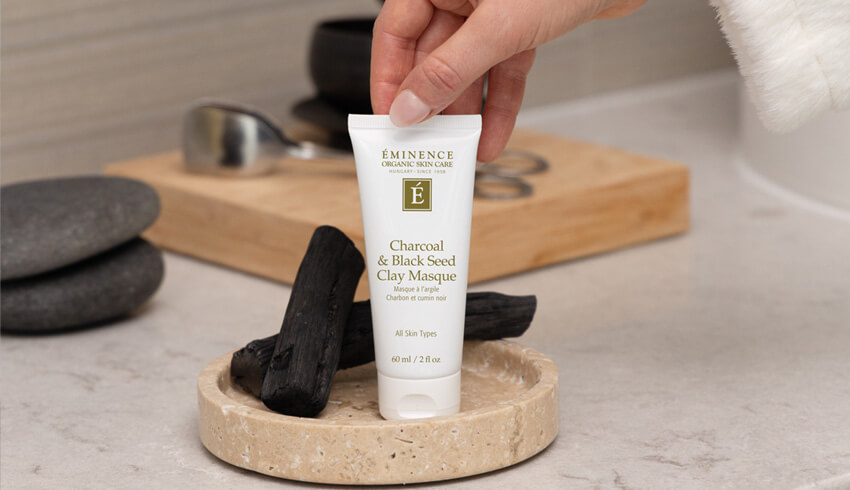
Are your clients looking to soften the first signs of aging with something more than skin care products? Do they ask questions about tightening up the skin but show concerns about the costs, recovery and risk involved? If so, it might be time to investigate the world of ultrasound facials.
Although the word "ultrasound" may conjure up images of babies or pregnancies, there’s an increasing amount of industry buzz about non-invasive ultrasonic facials to stimulate collagen and improve sagging skin. Plus, with no recovery time needed, no scarring, and lower treatment costs, ultrasound facials could be an effective alternative to a surgical facelift. Read on to find out why an ultrasound facial treatment could be what your clients have been looking for.
What Is an Ultrasound Facial?
Ultrasound facials, also known as high-intensity focused ultrasound (HIFU) are used to improve the look of sagging skin around the eyes, eyebrows, jowls, neck and chin area. An ultrasound facial treatment is non-invasive and uses energy to stimulate deep layers of skin. HIFU is ideal for those who would like to firm up soft, crepey skin and improve the look of fine lines.
How Do Ultrasound Facials Work?
According to Medical News Today after prepping the area, a trained skin care professional holds a handheld HIFU device to their client’s skin. When switched on, the machine head emits intense heat and high energy waves through the skin’s layers, to a single point deep below the skin's surface, between 4.5mm and 5mm. Bypassing the top layers of skin and going deep into the skin’s layers is "crucial," according to WebMD. It's important because collagen production takes place in these deeper layers.
Without leaving any visible marks on the skin, the heat targets specific cells in these deeper layers, causing cellular damage that serves to trigger a healing response. This response stimulates the production of skin-plumping collagen and elastane. In the following two to three months as collagen is produced, the skin should begin to thicken and tighten.
According to The American Board of Cosmetic Surgery, ultrasound facial benefits the skin in several ways:
- Smoothing facial wrinkles and improving the look of fine lines
- Improving skin elasticity
- Improving both neck and facial skin
- Reducing the appearance of "jowls" and firming up the skin under the jaw
- Lifting drooping eyelids or eyebrows
- Tightening the skin on the chest

The Ultrasound Facial Procedure
Healthline.com breaks down the procedure into the following steps:
- First, clean the target area.
- If needed, apply a topical anesthetic cream to your client’s treatment area.
- Apply an ultrasound gel to the treatment area.
- Place the HIFU device against the client’s skin.
- Adjust the device to the right setting, using an ultrasound viewer.
- Deliver ultrasound energy to the client’s target area in short pulses for roughly 30 to 90 minutes.
- Remove the device from the client’s skin.
- Although the procedure is not considered painful, clients might experience “a slight discomfort,” similar to tiny electric pulses, small bursts of heat or “a light prickly sensation.”
- The appointment should take between 30 - 90 minutes depending on the size of the treatment areas and type of machine.
Which Clients Benefit From An Ultrasound Facial & Who Should Avoid It?
Healthline.com suggests the treatment is best for younger clients with "mild-to-moderate skin laxity" who might be looking to minimize the early signs of aging. HIFU is also ideal for those looking for an alternative to a traditional facelift but who wants to avoid the risks and recovery involved with surgery.
Although ultrasound therapy has an “excellent safety profile” according to the American Board of Cosmetic Surgery, there are some clients who won’t benefit from the treatment. Clients with severely sagging skin wouldn’t be ideal candidates as they won’t see as strong results. clients who have infections, wounds or active acne lesions around the treatment area should also avoid energy treatments to those same areas until any wounds have healed. Pregnant clients and those on certain strong medications should also avoid energy-based treatments.
The Benefits of an Ultrasound Facial
- Non-invasive procedure with no scarring or stitches.
- A low-cost alternative to surgery.
- Ideal as a preventative treatment to firm sagging skin and to soften the first signs of aging.
- Is considered a relatively safe, low risk and a relatively painless treatment.
- Results can last up to a year.
- The entire treatment can be performed in spa in around one hour.
- No recovery time. Clients can simply continue their day after their appointment.
The Downsides
- While not as expensive as a facelift, the treatment is still expensive.
- Although full results are expected in a few months, results aren’t instant.
- This procedure is not ideal for older clients and those with severe skin sagging.
Note: This article is intended for licensed and certified spa professionals only. Before offering any of these treatments to your clients, it is the responsibility of all spa professionals to ensure they are trained and certified in the relevant spa treatments, prioritize the safety and well-being of their clients and adhere to the guidelines outlined by their professional licensing and certification.
Have you incorporated this treatment into your spa? Share your experiences with us in the comments below and join the conversation on social media. You can also find out how to become an Eminence Organics Spa Partner.
What Results Should Clients Expect?
Although a small "lift" is noticeable soon after the treatment, full results appear between three to six months after the appointment as this is how long the body takes to rebuild new collagen. The results are plumped-out wrinkles, tighter skin and reduced crepiness. This replenished skin can last between a year to 18 months.
According to The American Society for Dermatologic Surgery, most clients will only need one procedure for optimal results. However, depending on skin laxity and a biological response to the collagen-building process, some could benefit from two sessions.
Prior to the Treatment
Clients should arrive for their booking with a clean face; no make-up or moisturizer and as standard, the area should be cleaned before the treatment. Healthline.com suggests that If your client is sensitive to pain, they may want to speak with a doctor about taking acetaminophen (Tylenol) or a nonsteroidal anti-inflammatory drug (NSAID) such as ibuprofen (Advil).
Ultrasound Facial: After the Treatment
One of the biggest advantages of an ultrasound facial is your client’s ability to immediately resume normal life once the appointment is over. However, it’s important to advise your client that they may experience some redness and swelling on the day of treatment as well as tingles around the treatment area in the weeks after. More extreme reactions include numbness or bruising but these are rare and are likely to disappear in a few days.
According to WebMD, clients should monitor for possible side effects and should reach out for professional assistance if they notice:
- Redness that lasts more than one day after treatment
- Persistent skin tenderness or swelling that lasts more than a month
- Skin bleeding under the dermis for a few weeks post-treatment
- Scratch-like marks on the skin


